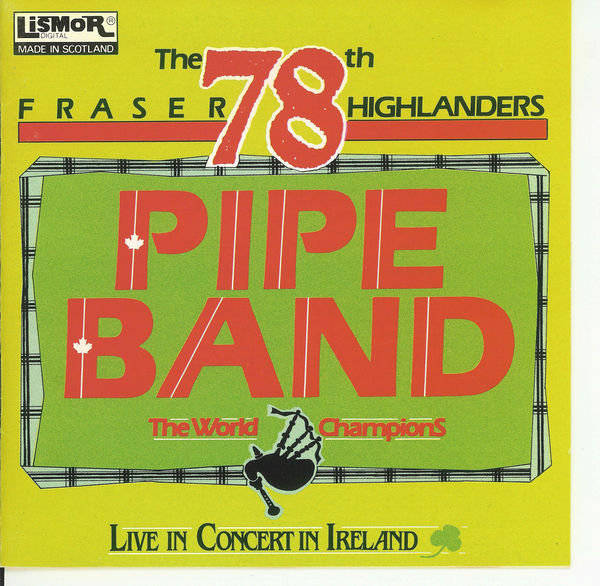Solitary confinement
 I’ve said before that Highland piping is often a solitary pursuit that attracts introverts. The lone piper. Solo competition. Hours of isolated practice at home. Maybe nowhere in our art is independence more evident than in our music creation.
I’ve said before that Highland piping is often a solitary pursuit that attracts introverts. The lone piper. Solo competition. Hours of isolated practice at home. Maybe nowhere in our art is independence more evident than in our music creation.
An estimate based on a lifetime of observation is that 99% of pipe music is written by a lone composer. Music creation in our world is thriving, driven by an ever-present thirst for the new by competition pipe bands. A band with a strong composer in its ranks has a great advantage.
I work in the songwriting, composing and music publishing side of the music industry. Our piping and drumming world is a model of creativity. But it’s also a relative outlier in that our composers don’t truly collaborate with each other to make tunes together.
Songwriters (also usually introverts), on the other hand, actively seek out new ideas from their peers. They attend song camps with other writers. They trade notes, as it were, and concepts for new music. Their publishers will put together writers from disparate genres and styles to see what happens. They chip away at their stuff, adding a word here, a key change there. They experiment with different idioms. They are almost always totally open to working together to create a better or more widely appealing work.
The exceptions to pipe music composers writing in solitude are generally the instances of a composer tacking on a few parts to an existing tune. Donald MacLeod did it a lot with traditional pieces, to the point where we attribute “The Wee Man from Skye,” for example, to him as the sole composer, when in fact it’s his arrangement. Piping schools will sometimes have an entire class compose a tune, coming up with phrases and changes together. Mainly because these pieces are written by relatively inexperienced pipers, they’re generally not great (read: terrible) compositions, but well intentioned and educational though they might be.
I was once in a band where, like most bands, we’d sit around the table with practice chanters in the winter and trade ideas on music possibilities for the next season. There were several composers in the band. They’d pitch new compositions, and the rest of the pipe corps would suggest a note change here, a timing improvement there, or even a collective Ugh! on first-listen of some or other hopeless piece. The group as a whole was a good editing machine. It was collaborative and, in many instances, it was a co-writing process. The tune got better when rattled around the ears of others.
Tunes that go through an editing process are almost invariably better. I don’t know what G.S. McLennan’s writing process was, but I would guess that he would, as I understand Donald MacLeod did, bounce tunes off of carefully chosen trusted pipers for their opinions and suggestions and then make many amendments and revisions before declaring a piece “final.” And no piece of music is ever final, anyway.
Composers who collaborate will often realize that they’re better off trashing a tune altogether. On their own, they might not twig that it’s too close to another piece designed around our nine notes, or that the new tune is unplayable or, um, unappealing.
Most composers do seek advice and suggestions about their draft work, but rarely if ever would they give credit to another piper as a co-writer, whereas in songwriting and composing in other genres it wouldn’t only be expected, it would be legally prudent. There’s a saying in the songwriting industry: “Change a word, get a third.”
How many pipe music composers sit down with one or more other composers to create a tune from scratch? Are there bands out there where the pipers sit around that winter table and collectively create a tune needed for the new medley? Or do all bands expect “the composer” in the band to come up with something great on his or her own?
I know that most of us are introverts who, perhaps paradoxically, like being in a spotlight, letting our music speak for us. But when it comes to new compositions, taking the cue from successful songwriters and seeking real collaboration could well pay better dividends for the art.


 The now double-homage to the anniversary of the 78th Fraser Highlanders “Live In Ireland” concert in Ballymena in 1987 is much deserved and, evidently, attractive to many people who wanted to live or relive the event.
The now double-homage to the anniversary of the 78th Fraser Highlanders “Live In Ireland” concert in Ballymena in 1987 is much deserved and, evidently, attractive to many people who wanted to live or relive the event.
 Why are you out to get us? You seem to have it in for me. Why are you so unfair? You’re biased!
Why are you out to get us? You seem to have it in for me. Why are you so unfair? You’re biased!
 So music acts and politicians are boycotting the Donald Trump inauguration. I admire them for standing firm on their political beliefs, and can understand why musicians might feel that performing at an event could be seen to support the new regime, which might be bad for their image and alienate the majority of their fan-base.
So music acts and politicians are boycotting the Donald Trump inauguration. I admire them for standing firm on their political beliefs, and can understand why musicians might feel that performing at an event could be seen to support the new regime, which might be bad for their image and alienate the majority of their fan-base.


 The music you liked when you were younger is the music you will prefer for the rest of your life. That’s an oversimplification, and there are exceptions, but, by and large it’s true of most people.
The music you liked when you were younger is the music you will prefer for the rest of your life. That’s an oversimplification, and there are exceptions, but, by and large it’s true of most people.
 This summer I’ve had the pleasure of revisiting a part of that UK pipe band scene tradition at competitions called the “march past.”
This summer I’ve had the pleasure of revisiting a part of that UK pipe band scene tradition at competitions called the “march past.”
 As the summer gathers steam so too do the plans of North American, Australian, Kiwi, South African, European and other non-Scottish pipers and drummers making their pilgrimage to our musical Mecca . . otherwise known as Scotland.
As the summer gathers steam so too do the plans of North American, Australian, Kiwi, South African, European and other non-Scottish pipers and drummers making their pilgrimage to our musical Mecca . . otherwise known as Scotland.




 I like
I like 
 Social media has profoundly impacted the piping and drumming world. I
Social media has profoundly impacted the piping and drumming world. I  Social media is a melting pot for piping and drumming. Twenty years ago, unless you played in a band with someone, or hung out with them in solo circles, or maybe went to a piping and drumming summer school, you’d hardly know anything substantial about anyone.
Social media is a melting pot for piping and drumming. Twenty years ago, unless you played in a band with someone, or hung out with them in solo circles, or maybe went to a piping and drumming summer school, you’d hardly know anything substantial about anyone.

 Pipe bands and solo pipers are generally reluctant to introduce unfamiliar tunes into their competition repertoire. It’s usually regarded as an unnecessary risk to unveil a medley of all, or even half, newly minted, previously unheard content. When it comes to MSRs, those of us who have been around a few years have heard “The Clan MacRae Society,” “Blair Drummond” and “Mrs. MacPherson” ten-thousand times.
Pipe bands and solo pipers are generally reluctant to introduce unfamiliar tunes into their competition repertoire. It’s usually regarded as an unnecessary risk to unveil a medley of all, or even half, newly minted, previously unheard content. When it comes to MSRs, those of us who have been around a few years have heard “The Clan MacRae Society,” “Blair Drummond” and “Mrs. MacPherson” ten-thousand times.
 The Highland pipes draw attention. The volume and distinct sound of the instrument – especially when played poorly – get a reaction from people, so pipers are often seen in protests and parades.
The Highland pipes draw attention. The volume and distinct sound of the instrument – especially when played poorly – get a reaction from people, so pipers are often seen in protests and parades. To the general public, the sound of “the pipes” is increasingly becoming the sound of the uilleann pipes.
To the general public, the sound of “the pipes” is increasingly becoming the sound of the uilleann pipes.


![Brian Smith and Ra McGuire at the 2012 SOCAN Awards. [Photo: Grant Martin.]](https://www.pipesdrums.com/storage/2013/04/Trooper_SOCAN_Awards_20123.jpg)









